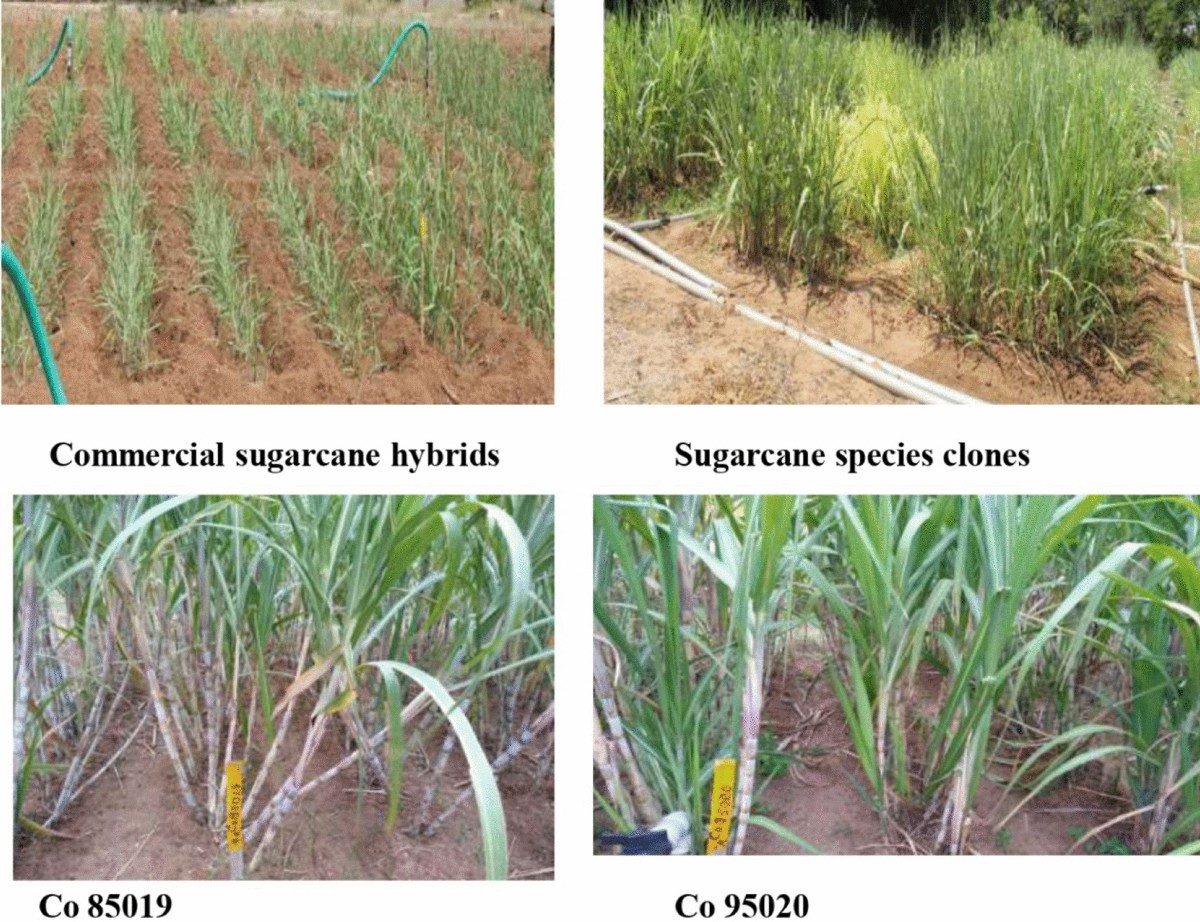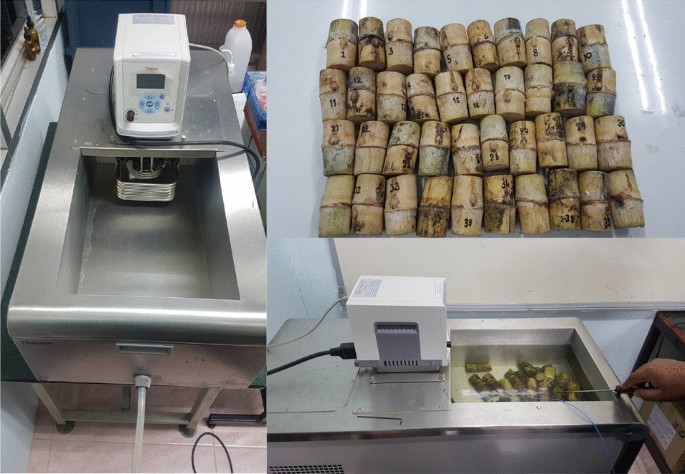Discover the Innovative Benefits of Products From Sugarcane for Sustainable Living
Sugarcane has actually become a pivotal source in the mission for lasting living. Its varied applications span naturally degradable product packaging, renewable resource, and much healthier food choices. As markets look for eco-friendly options, sugarcane's convenience uses promising services. Nonetheless, real possibility of sugarcane prolongs beyond its present usages. Discovering its cutting-edge advantages might disclose brand-new pathways towards a more sustainable future. What other possibilities might this exceptional plant hold?

The Surge of Sugarcane as a Lasting Source
As international understanding of ecological issues grows, sugarcane has actually arised as a prominent sustainable source. This versatile plant provides a range of benefits that contribute to environmentally friendly practices. Sugarcane is a renewable energy, capable of prospering in varied environments while taking in co2, therefore alleviating greenhouse gas discharges. Its quick growth cycle enables for frequent harvesting, causing a continual supply of raw material.Additionally, sugarcane growing usually calls for much less water contrasted to other plants, making it an efficient choice in water-scarce areas. The byproducts of sugarcane, such as bagasse and molasses, can be repurposed for different applications, reducing waste and advertising circular economic climate principles. Moreover, improvements in agricultural techniques have actually led to even more sustainable farming techniques, further improving sugarcane's ecological profile. As consumers progressively look for lasting options, sugarcane sticks out as a viable choice for those committed to lowering their ecological footprint.
Naturally Degradable Product Packaging Solutions
Just how can eco-friendly product packaging remedies transform the method consumers come close to sustainability? By utilizing sugarcane-based products, these cutting-edge solutions offer an engaging choice to typical plastics. Eco-friendly product packaging made from sugarcane disintegrates naturally, significantly lowering land fill waste and greenhouse gas exhausts. As customers come to be progressively mindful of their ecological effect, the demand for sustainable packaging continues to rise.These sugarcane-derived products not just serve practical purposes but additionally line up with eco-conscious customer worths. They give a substantial method for organizations and people to add to a circular economic situation, advertising resource efficiency and reducing ecological footprints. Additionally, as markets embrace naturally degradable options, they foster a society of sustainability that reverberates with an expanding demographic seeking liable choices.In essence, naturally degradable packaging options from sugarcane stand for a crucial advance in lasting techniques, equipping customers to make eco pleasant decisions without giving up convenience or high quality.
Renewable Power Generation From Sugarcane
A significant portion of renewable resource generation can be originated from sugarcane, showcasing its adaptability past traditional agricultural usages. Sugarcane biomass, including bagasse and leaves, is a potent source for bioenergy production. This biomass can be converted into biofuels such as ethanol, which serves as a cleaner choice to nonrenewable fuel sources. Furthermore, the burning of sugarcane byproducts generates vapor and electrical power, offering a power source for sugar mills and neighboring communities.The cultivation of sugarcane likewise contributes to carbon sequestration, as the plants soak up carbon dioxide during their development cycle. By utilizing sugarcane for energy, waste is lessened, and lasting methods are motivated. This sustainable power strategy not just supports energy requirements however additionally advertises country advancement, producing tasks in bioenergy markets. Generally, sugarcane attracts attention as a principal in the shift to lasting power options, lining up with international efforts to decrease carbon footprints.

Eco-Friendly Textiles and Fabrics
Environment-friendly textiles and materials originated from sugarcane present an appealing alternative to standard materials. These eco-friendly alternatives not only reduce ecological effect but additionally offer longevity and performance comparable to standard textiles. Sustainable manufacturing procedures additionally boost their allure, making them an essential component of a sustainable lifestyle.
Naturally Degradable Material Alternatives
Why is the adjustment toward naturally degradable fabric choices crucial for sustainable living? The raising recognition of ecological deterioration has actually motivated a search for options to standard fabrics, which frequently add to air pollution and waste. Naturally degradable fabrics, originated from sustainable resources such as sugarcane, offer an encouraging option. These products disintegrate normally, minimizing landfill accumulation and decreasing environmental influence. Additionally, they can help reduced carbon footprints and dependence on fossil fuels. As consumers end up being extra eco-conscious, the demand for sustainable textiles expands, motivating producers to invest and innovate in eco-friendly options. This modification not just supports lasting practices however additionally cultivates a circular economy, leading the method for a much more responsible method to style and fabric manufacturing.
Sturdiness and Efficiency
Longevity and efficiency are essential elements when reviewing environment-friendly textiles and fabrics. Sugarcane-derived products demonstrate remarkable toughness and durability, making them appropriate for numerous applications. These fabrics usually exhibit remarkable moisture-wicking residential or commercial properties, which improve comfort in day-to-day wear. In addition, their all-natural fibers add to breathability, guaranteeing that garments continue to be fresh and wearable even in demanding conditions. The performance of sugarcane-based fabrics encompasses their resistance to tear and use, enabling items to maintain their integrity gradually. These environment-friendly fabrics can be treated to enhance UV defense and tarnish resistance, fulfilling the functional needs of consumers without compromising sustainability. Inevitably, sugarcane fabrics supply an unified equilibrium of durability and efficiency, appealing to ecologically aware individuals.
Sustainable Production Procedures
The excellent longevity and performance of sugarcane-derived textiles are matched by sustainable manufacturing processes that prioritize ecological responsibility. These procedures use renewable energies, minimizing reliance on nonrenewable fuel sources and lowering carbon impacts. By taking advantage of the by-products of sugarcane farming, producers can develop environmentally friendly materials while advertising waste more tips here decrease. Advanced strategies, such as water-efficient dyeing and eco-friendly therapies, better enhance the sustainability of these textiles. In addition, the use of safe chemicals warranties that the production process does not hurt communities or human health. This commitment to sustainability not just allures to ecologically mindful customers but likewise supports local economic climates by promoting sustainable agricultural methods. In general, sugarcane-derived textiles represent a significant action in the direction of a greener future in the fashion sector.
Sugarcane-Based Biofuels and Their Influence

Sugarcane-based biofuels have actually emerged as a significant alternative energy source, offering a renewable solution to the globe's growing energy needs. These biofuels, stemmed from the fermentation of sugarcane juice or molasses, offer an even more sustainable option contrasted to fossil gas. Their production procedure produces reduced greenhouse gas discharges, adding to climate change reduction efforts.Additionally, sugarcane biofuels can boost energy security by branching out energy sources and lowering dependancy on imported oil. The farming of sugarcane also advertises country advancement, producing tasks and promoting local economies.However, concerns relating to land use and food competition persist, as boosted biofuel manufacturing may affect food supply chains. Lasting farming methods are crucial to balancing these ensuring and contending rate of interests that biofuel manufacturing does not threaten food safety. In general, sugarcane-based biofuels represent an appealing avenue for a greener energy future, supplied that their ecological and social implications are meticulously managed.
Healthier Alternatives: Sugarcane in Food Products
While lots of customers look for much healthier alternatives in their diet plans, sugarcane items provide a nourishing alternative to improved sugars and sweetening agents. Stemmed from the all-natural removal of sugarcane juice, these items keep essential nutrients, including vitamins and minerals, that are commonly shed in processed sugars. Sugarcane has anti-oxidants and dietary fiber, contributing to general health and wellness and wellness.Many health-conscious people are turning to sugarcane syrup and jaggery, which offer a lower glycemic index compared to conventional sugars, making them ideal for those managing blood sugar levels. In addition, sugarcane-derived sweeteners can enhance the flavor of various dishes without the unfavorable impacts connected with synthetic additives.This change in the direction of all-natural sweetening agents not only advertises much better dietary choices but likewise straightens with lasting living methods, as sugarcane is a sustainable resource. Therefore, sugarcane items are emerging as positive options in the domain of food.
The Future of Sugarcane in Sustainable Advancements
The future of sugarcane is poised to encompass cutting-edge applications that expand past standard usages. Its prospective as a source for naturally degradable product packaging solutions and renewable power resources highlights its function in lasting practices. Exploring these developments could considerably influence ecological conservation and resource monitoring.
Biodegradable Product Packaging Solutions
A boosting variety of companies are turning to naturally degradable packaging solutions originated from sugarcane as an encouraging alternative to typical plastics. These innovative materials, commonly made from sugarcane fibers and bioplastics, break down naturally, reducing the durable environmental impact connected with conventional plastic waste. By using renewable resources, sugarcane-based packaging adds to a much more view lasting production cycle, lining up with worldwide efforts to fight air pollution and climate change. Furthermore, these remedies often keep the resilience and performance needed for various applications, from food containers to delivery products. As consumer demand for environment-friendly choices expands, services embracing sugarcane product packaging not just enhance their brand picture yet also play an essential role in cultivating a round economic situation, leading the way for a greener future.
Renewable Resource Resources
Biodegradable packaging remedies are simply one facet of the more comprehensive potential of sugarcane in advertising sustainability. Another substantial application hinges on renewable resource resources. Sugarcane is a versatile plant that can be used to create biofuels, such as ethanol, which functions as a cleaner alternative to fossil fuels. The fermentation process of sugarcane juice yields ethanol that can power vehicles and create electrical power. Additionally, the by-products of sugarcane processing, like bagasse, can get more be made use of to create biomass power, supplying a lasting and effective approach to harness energy. This dual function as both a source of biofuel and biomass emphasizes sugarcane's potential in lowering carbon discharges and sustaining a change to a much more sustainable power landscape in the future.
Often Asked Concerns
How Is Sugarcane Gathered Sustainably?
Sugarcane harvesting can be sustainable with techniques like manual cutting, which decreases soil disturbance, and using machinery that minimizes fuel usage (Products From Sugarcane). Crop turning and incorporated pest monitoring further boost ecological wellness and advertise long-lasting dirt fertility
What Are the Ecological Influences of Sugarcane Farming?

Can Sugarcane Products Be Recycled?
The question of whether sugarcane products can be recycled discloses a favorable outlook. Lots of sugarcane-derived products, such as bioplastics and product packaging, are designed for recyclability, contributing to a more lasting waste management method within ecological factors to consider.
Are There Any Kind Of Drawbacks to Using Sugarcane-Based Products?
The drawbacks of using sugarcane-based products include potential land use competition with food crops, challenges in large-scale production, and problems concerning the ecological influence of monoculture farming techniques, which can reduce biodiversity and soil wellness.
Just How Does Sugarcane Growing Affect Resident Communities?
Sugarcane cultivation influences neighborhood areas by giving employment possibility and boosting regional economies. However, it can likewise bring about land disagreements and environmental issues, impacting farming practices and community wellness, necessitating a balanced technique to development. Improvements in agricultural methods have actually led to even more lasting farming approaches, better improving sugarcane's environmental profile. In addition, the burning of sugarcane results generates heavy steam and electrical power, giving a power source for sugar mills and neighboring communities.The cultivation of sugarcane additionally contributes to carbon sequestration, as the plants soak up carbon dioxide during their development cycle. By utilizing sugarcane for power, waste is reduced, and sustainable practices are motivated - Products From Sugarcane. Sugarcane contains anti-oxidants and nutritional fiber, contributing to total health and wellness.Many health-conscious people are turning to sugarcane syrup and jaggery, which provide a reduced glycemic index contrasted to traditional sugars, making them ideal for those handling blood sugar degrees. Furthermore, the by-products of sugarcane processing, like bagasse, can be used to generate biomass power, providing a effective and sustainable approach to harness power
Comments on “Are Products From Sugarcane Scalable for Mass Manufacturing?”